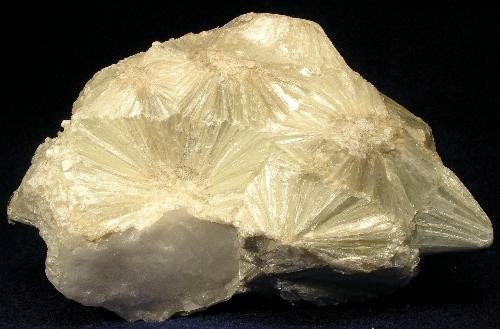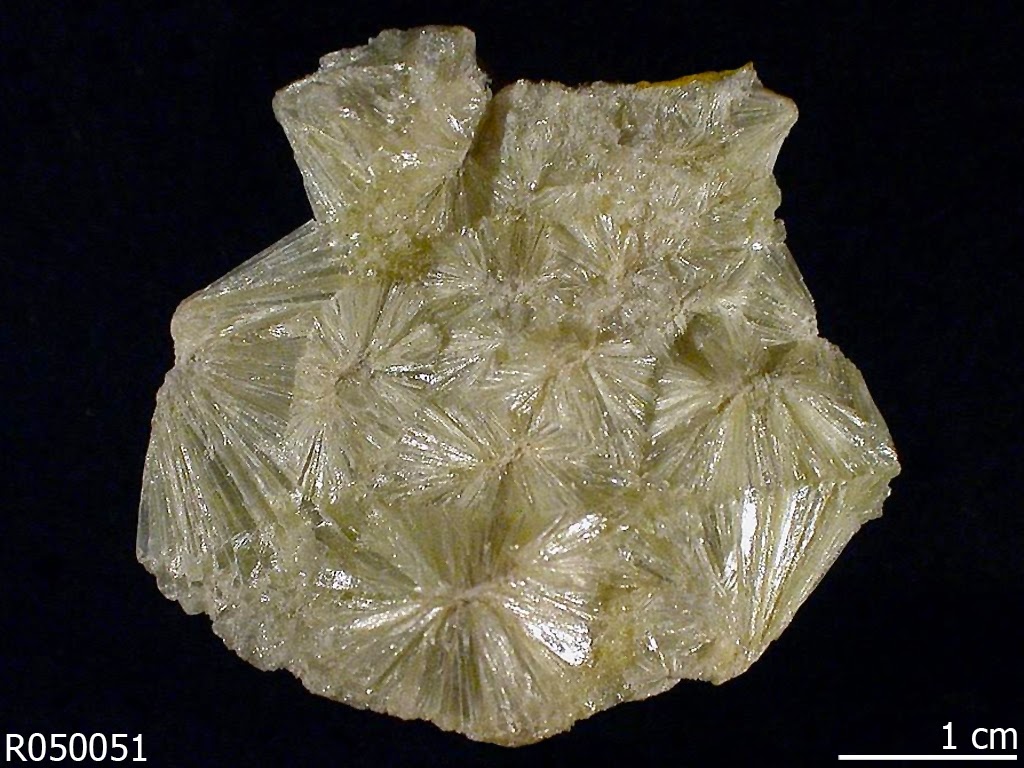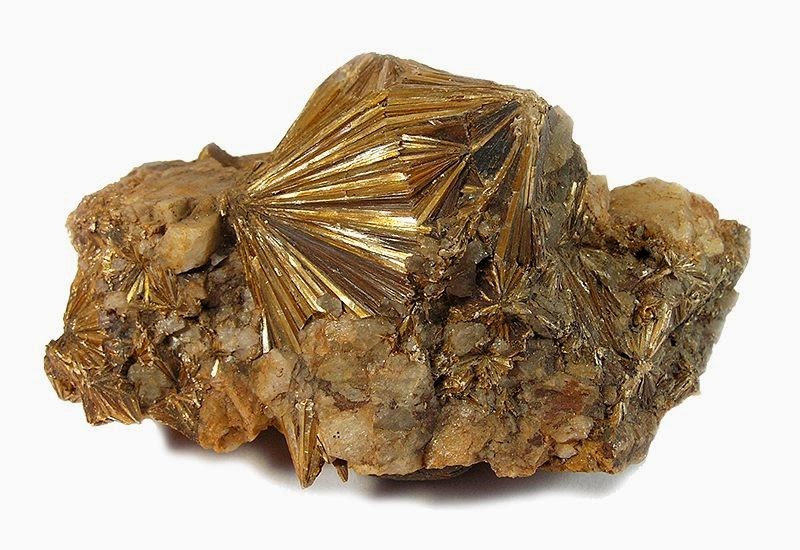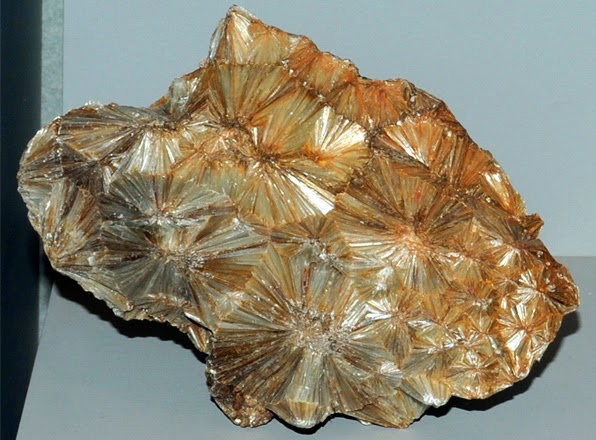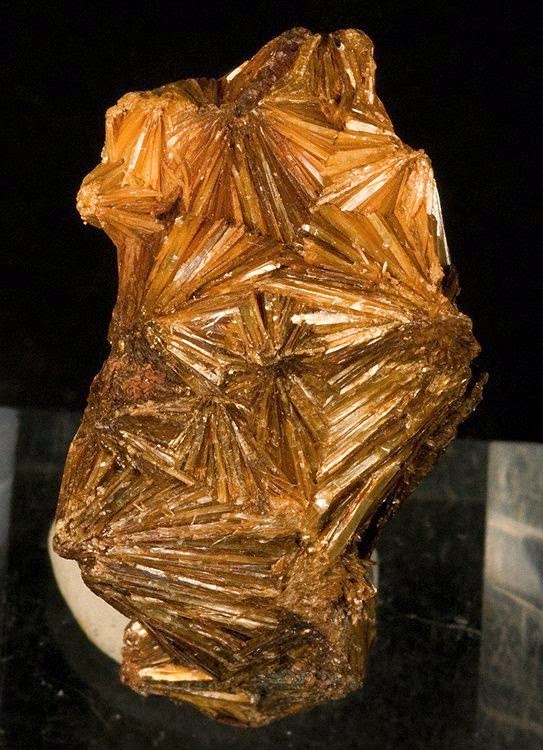
Chemical Formula: Al2(Si4O10)(OH)2
Locality: Tres Cerritos, California, USA; Pyschminsk and Beresovsk, Ural Mountains, Russia.
Name Origin: From the Greek for fie and leaf, in allusion to its tendency to exfoliate into fan shapes when heated.
Pyrophyllite is a phyllosilicate mineral composed of aluminium silicate hydroxide: Al2(Si4O10)(OH)2. It occurs in two more or less distinct varieties, namely, as crystalline folia and as compact masses; distinct crystals are not known.
The folia have a pronounced pearly lustre, owing to the presence of a perfect cleavage parallel to their surfaces: they are flexible but not elastic, and are usually arranged radially in fan-like or spherical groups. This variety, when heated before the blowpipe, exfoliates and swells up to many times its original volume, hence the name pyrophyllite, from the Greek pyros (fire) and phyllos (a leaf), given by R. Hermann in 1829. The color of both varieties is white, pale green, greyish or yellowish; they are very soft (hardness of 1 to 1.5) and are greasy to the touch. The specific gravity is 2.65 – 2.85. The two varieties are thus very similar to talc.
History
Authors: WARDLE & BRINDLEY
Discovery date : 1972
Town of Origin : PYSCHMINSK et BEREZOV, OURAL
Country of Origin: RUSSIE ex-URSS
Chemical properties
Chemical Class : PHYLLOSILICATES
Subclass : Phyllosilicates
Chemical Formula : Al2(Si4O10)(OH)2
Crystallographical properties
Crystalline System: Triclinic
Symmetry Class: 31;32
Network System: Center C –
a : 5,16
b : 8,96
c : 9,34
Alpha : 91,18
Beta : 100,46
Gamma : 89,64
Z : Formula units per unit cell : 2
Optical properties
Optical and misc. Properties: Translucide – Opaque
Physical properties
Hardness : from 1,00 to 2,00
Density : 2,70
Color : pearl-white; yellow; brown yellow; pale blue; grey green; grayish green; bluish green
Streak: white
Cleavage: yes
Photos:
